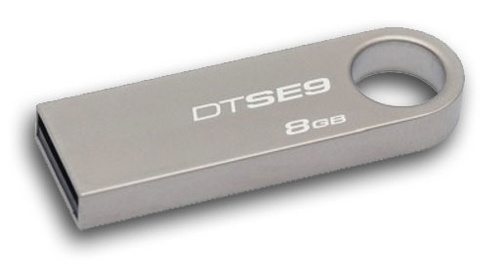What is a Flash Drive?
A flash drive is mechanical equipment that you can use to store information from computers. Sometimes the flash drive is thought of as being similar to a hard drive. This is the part of your computer that stores all the information. Unlike hard drives, flash drives are smaller in size, which adds to their portability and allows you to easily carry them inside your pocket.

Furthermore, flash drives are static which means that they do not need any power to run on. You do not need to have an electrical cord to plug them in. However, you still need a computer in order to use them, which means that they are not stand-alone devices.
The end of the flash drive that plugs into the computer is a USB interface, which stands for Universal Serial Bus. The USB end is the portal that allows for the transfer of information between the computer and the flash drive. Inside of the rubber or plastic casing of the USB, you will find flash memory chips that store information.
The reason why you call this device a flash drive is because it does not have any moving parts. It only consists of data merged into a drive and it stays there. There are many different types of flash drives and they come in various shapes. Their memory can range from 256 megabytes to 2 terabytes (equivalent to 2000 GB or 2000000 megabytes).
You can store thousands of photos, audio files, videos and more. Some USB’s come with an extractable SD card attached to the back of it. Overall, flash drives are incredibly useful, secure, and easy to use.
History of USB Flash Drives
USB flash drives revolutionized data storage. Before the rise of cloud computing, flash drive data storage was extremely popular in early 2000s. Its portability, speed, and size of storage made it an incredible invention.
Some of the initial standards for connecting devices to computers were serial and parallel ports. Parallel ports meant that multiple bits of data could be sent in parallel. The more common connection for this type of standard was seen in the printer port. This port existed from the 1970s all the way up to the early 2000s.
This connector was rather large and the bulky cables were not easily portable. The serial standard helped users transfer data one bit at a time in serial. Many standards of protocol today happen to fit the definition of serial connection. When most people say serial connection, they are typically referring to the RS232 standard. Today, many servers and industrial services still use the serial standard.
Overall, there were many standards that came for data transfer and storage, but none of them matched the portability and speed of the USB. The USB was developed around the same time as FireWire. The objective of the USB invention was to unify the similar connectors together.
Unlike FireWire, a USB does not need a dedicated host device to operate, which led to USB A and B being separate connectors to differentiate connectors. USB also differs from FireWire because it can handle up to 127 devices. USB 1.0 debuted in 1995 at 12 mega bits per second, which was a great improvement from the previous devices.
USB 1.1 came shortly after, which could still do 12 megabits per second, but also 1.5 mega bits per second for smaller and more efficient device operations. USB 2.0 came during the year 2000 at a whopping 480 megabits per second. USB devices that use any of these standards were fully forwards and backwards compatible, operating at the speed of the lowest link on the chain.
USB 2.0 also paved the way for a much more powerful delivery, which contributed to the first mini and micro computers. When USB flash drives came into existence, they changed the game for portable storage as they were a small, plug and play, and rewritable device. As time passed, USBs came with an extra set of pins that facilitated higher speeds. Today, USB type C expands on the universal vision and expands on the one connector to rule them all.
Invention of the Flash Drive
Before the USB flash drive existed, there were floppy disks, which had a minimum storage capacity of 80KB. Since this was a magnetic storage, it used the electromagnetic interference to function. The flash drive was a solution to the limited capacity and slow mechanism of the earlier storage devices. The first patent of the flash drive came about in 1999 by an Israeli company known as M-systems.
Who Invented the Flash Drive?
In December 15 2000, IBM systems and Disk-in-Key collaborated to create the flash drive. The advanced version of the flash drive was brought forward by Phua Khein as a single chip item. In 2000, he opened his own company and a patent known as pen drive came about which led to the USB flash drive you see today.
What to Do When a Flash Drive is not Recognized?
If your USB device is not recognized on your windows desktop, then you will first have to go to the search bar, then type Windows PowerShell. Once you have selected this option, then type in some commands to the dashboard that opens. Once you have done that, the system will try to troubleshoot the problem. After that, you will have to go to the device manager and right click on the USB route hub. You can search the internet and find out the various methods that you can try when it comes to resolving flash drive related issues.
